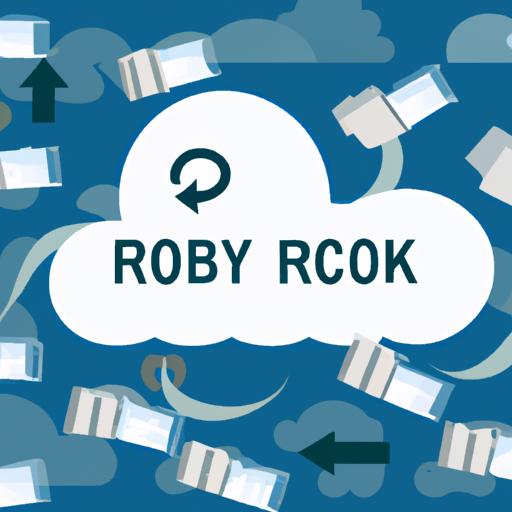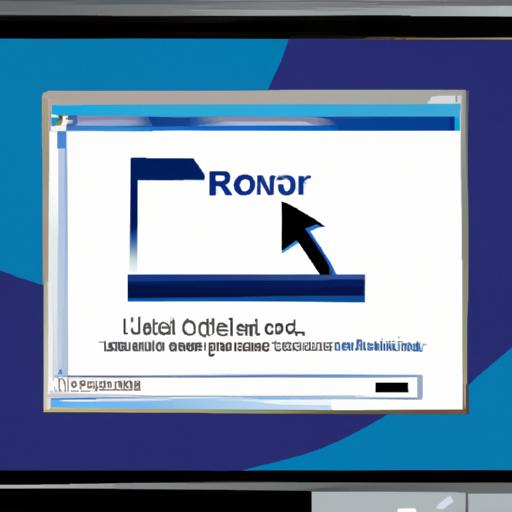In today’s digital age, small businesses are faced with the challenge of managing a growing number of digital assets. From images and videos to documents and presentations, the sheer volume of digital content can quickly become overwhelming. This is where digital asset management (DAM) software comes to the rescue. By providing a centralized solution for organizing, storing, and accessing digital assets, DAM software offers small businesses the key to efficient asset management and accelerated growth.
A. Importance of digital asset management software for small businesses
Imagine spending hours searching for a specific image or struggling to collaborate on projects due to scattered files and disorganized folders. These scenarios not only hamper productivity but also hinder creativity and innovation. This is where digital asset management software proves its worth. By implementing DAM software, small businesses can streamline their asset management processes, saving valuable time and resources.
DAM software enables businesses to maintain a well-structured and easily searchable database of digital assets. With powerful search and metadata capabilities, you can quickly locate the assets you need, eliminating the frustration of endless searching. Moreover, DAM software allows for seamless collaboration, enabling teams to work together on projects, share assets, and maintain version control.
B. Overview of digital asset management and its benefits
Digital asset management encompasses the organization, storage, and distribution of digital assets throughout their lifecycle. From creation to archiving, DAM software provides a robust framework for managing assets efficiently. This includes image editing, file conversion, automated tagging, and asset usage analytics.
The benefits of implementing digital asset management software are manifold. Firstly, it enhances brand consistency by ensuring that all assets are up-to-date and accessible to authorized users. This eliminates the risk of using outdated or inconsistent branding materials.
Secondly, DAM software improves productivity by reducing redundant tasks and enabling efficient collaboration. By providing a centralized platform, team members can easily access and share assets, facilitating smoother workflows.
Lastly, DAM software enhances security by granting controlled access to assets. With user permissions and access controls, businesses can safeguard sensitive information and intellectual property.
In conclusion, digital asset management software is a game-changer for small businesses. It empowers organizations to efficiently organize, store, and access their digital assets, thereby unleashing productivity, enhancing collaboration, and fueling growth. In the following sections, we will delve deeper into the benefits of using DAM software for small businesses and explore the factors to consider when choosing the right solution for your specific needs.
Understanding Digital Asset Management Software
A. Definition and Purpose of Digital Asset Management Software
Digital Asset Management (DAM) software refers to a comprehensive solution designed to facilitate the organization, storage, retrieval, and sharing of digital assets. These assets can include images, videos, audio files, documents, and more. The primary purpose of DAM software is to provide a centralized repository where businesses can efficiently manage their growing collection of digital assets.
By implementing DAM software, small businesses can overcome the challenges associated with manual asset management processes. With a user-friendly interface, DAM software simplifies the task of categorizing and tagging assets, ensuring easy and quick retrieval when needed. This saves valuable time and improves overall productivity.
B. Key Features and Functionalities of Digital Asset Management Software for Small Businesses
-
Asset Organization: DAM software allows businesses to categorize assets into folders, add metadata, and apply tags for easy searching and filtering. This ensures assets are well-organized, making it effortless to locate specific files or groups of assets.
-
Metadata Management: DAM software enables users to add descriptive information (metadata) to assets, such as titles, descriptions, keywords, and copyright details. This metadata helps in organizing and searching for assets based on specific criteria, enhancing efficiency and accuracy.
-
Version Control: With version control functionality, DAM software allows businesses to keep track of changes made to assets over time. This ensures that teams are always working with the latest version of an asset, eliminating confusion and mistakes.
-
Collaboration Tools: Many DAM software solutions offer collaboration features, such as the ability to comment on assets, assign tasks, and track progress. This promotes seamless teamwork, streamlines workflows, and enhances productivity.
-
Access Control and Permissions: DAM software provides robust access control mechanisms, allowing businesses to grant specific permissions to users or user groups. This ensures that only authorized individuals can access sensitive assets, maintaining data security and compliance.
-
Integration with Existing Tools: DAM software can integrate with other essential business tools, such as content management systems (CMS), project management software, and creative software suites. This integration streamlines workflows and enables a seamless transfer of assets between different platforms.
In the next section, we will explore the numerous benefits that digital asset management software offers for small businesses.
Benefits of Using Digital Asset Management Software for Small Businesses
In the fast-paced digital landscape, small businesses need every advantage they can get to stay competitive. Implementing digital asset management (DAM) software offers a multitude of benefits that can revolutionize the way small businesses manage their digital assets. Let’s explore some of these advantages in detail:
A. Efficient organization and storage of digital assets
With DAM software, small businesses can bid farewell to the days of searching through countless folders and files for a specific asset. DAM software provides a centralized repository for all digital assets, allowing for efficient organization and storage. Assets can be categorized, tagged, and assigned metadata, making it easy to search and locate them whenever needed. This streamlined approach not only saves time but also enhances productivity and eliminates the frustration of lost or misplaced assets.
B. Improved collaboration and workflow management
Collaboration lies at the heart of any successful business. DAM software facilitates seamless collaboration by enabling team members to access, share, and collaborate on assets from a single platform. Whether you have remote teams or multiple departments, DAM software ensures everyone has real-time access to the latest versions of assets, eliminating confusion and ensuring everyone is on the same page. Additionally, workflow management tools within DAM software allow businesses to set up approval processes, assign tasks, and track progress, ensuring efficient collaboration throughout the asset lifecycle.
C. Time and cost savings through streamlined processes
Time is money, and small businesses understand the value of optimizing processes to maximize efficiency. DAM software streamlines asset management processes, saving significant time and reducing costs. With automated workflows, businesses can eliminate manual tasks, such as file conversions or resizing images, that would otherwise consume valuable resources. Moreover, DAM software reduces the risk of duplicate assets or using outdated materials, ultimately saving costs associated with rework or licensing fees.
D. Enhanced security and access control for sensitive assets
Protecting sensitive assets is crucial for small businesses. DAM software provides robust security features, including user permissions and access controls, ensuring that only authorized individuals can access or modify assets. This greatly reduces the risk of unauthorized distribution or misuse of sensitive information. Additionally, DAM software offers data backups and disaster recovery options, providing an extra layer of security for valuable digital assets.
E. Scalability and flexibility to accommodate business growth
Small businesses often experience rapid growth, and their digital asset management needs evolve accordingly. DAM software offers scalability and flexibility to accommodate growing businesses. Whether you have a handful of assets or a vast library, DAM software can handle the expanding volume of digital assets effortlessly. Moreover, DAM software integrates with other tools and software, allowing businesses to customize their workflows and adapt to changing business requirements.
By leveraging digital asset management software, small businesses can unlock a range of benefits, including efficient organization, improved collaboration, time and cost savings, enhanced security, and scalability. In the next section, we will explore the factors to consider when choosing the most suitable DAM software for your small business needs.
Factors to Consider When Choosing Digital Asset Management Software for Small Businesses
When it comes to selecting the right digital asset management (DAM) software for your small business, there are several crucial factors to consider. By carefully evaluating these factors, you can ensure that the chosen software aligns with your specific needs and maximizes the benefits it brings to your organization.
A. Cost-effectiveness and budget considerations
Budget considerations are a top priority for small businesses. Before diving into the options available, it’s essential to determine your budget for DAM software. Consider the upfront costs, ongoing subscription fees, and any additional charges for customization or support. Compare pricing plans from different vendors to find a solution that offers the best value for your investment.
B. User-friendly interface and ease of use
A user-friendly interface is vital for seamless adoption and efficient utilization of DAM software. Look for a solution that offers an intuitive and easy-to-navigate interface, ensuring that your team can quickly learn and leverage its features. Additionally, consider the availability of training resources and documentation that can support your team in mastering the software effectively.
C. Integration capabilities with existing software and tools
To avoid disruptions to your existing workflows, it is crucial to choose DAM software that integrates seamlessly with your current software and tools. Whether it’s content management systems, project management platforms, or creative software, ensure that the DAM solution can integrate smoothly with your tech stack. This integration will enable streamlined workflows and minimize manual data transfers.
D. Customization options and scalability
Every business has unique requirements, and your DAM software should be able to cater to those needs. Look for a solution that offers customization options, allowing you to tailor the software to match your specific workflows, branding guidelines, and metadata requirements. Additionally, consider the scalability of the software. As your business grows, the DAM solution should be able to accommodate the increasing volume of assets and users without compromising performance.
E. Customer support and training resources
Reliable customer support and comprehensive training resources are crucial for a successful implementation and smooth operation of DAM software. Ensure that the vendor provides responsive customer support channels, such as email or live chat, to address any technical issues or inquiries promptly. Additionally, check if they offer training materials, tutorials, or dedicated training sessions to help your team make the most of the software’s features.
By carefully assessing these factors, you can make an informed decision and select a DAM software solution that aligns with your budget, usability requirements, integration needs, customization preferences, and support expectations. In the next section, we will explore some of the top digital asset management software options available for small businesses.
Top Digital Asset Management Software for Small Businesses
Managing digital assets effectively requires the right tool for the job. To help you navigate the vast array of options available, we have curated a list of top digital asset management software solutions specifically tailored for small businesses. These software solutions offer a range of features, competitive pricing, and positive customer reviews, making them stand out from the crowd. Let’s take a closer look at each one:
Software 1: Features, Pricing, and Customer Reviews
Software 1 is a robust digital asset management solution designed with small businesses in mind. With its intuitive interface and user-friendly features, it allows you to easily organize and access your digital assets. From image libraries to document management, this software provides a comprehensive suite of tools. Additionally, it offers customizable metadata fields, advanced search capabilities, and seamless integration with popular applications, ensuring a seamless workflow. Pricing plans are flexible and affordable, catering to the needs and budget of small businesses. Customer reviews highlight its reliability, ease of use, and excellent customer support.
Software 2: Features, Pricing, and Customer Reviews
Software 2 is another top-notch digital asset management software solution tailored for small businesses. It boasts an array of features designed to enhance productivity and collaboration. This software offers powerful asset organization and tagging capabilities, allowing you to quickly find and share your digital assets. It also provides robust security features, ensuring that your assets are protected at all times. With its user-friendly interface and affordable pricing plans, Software 2 is a popular choice among small businesses. Customer reviews commend its seamless integration, scalability, and exceptional customer service.
Software 3: Features, Pricing, and Customer Reviews
Software 3 is a cutting-edge digital asset management solution that caters specifically to the needs of small businesses. Its intuitive interface and comprehensive features simplify the management of digital assets. This software offers advanced metadata management, version control, and collaboration tools, enabling efficient teamwork. With its flexible pricing options, you can find a plan that suits your small business budget. Customer reviews highlight its robust functionality, ease of use, and prompt support.
In conclusion, these top digital asset management software solutions provide small businesses with the tools they need to efficiently manage their digital assets. Each software offers unique features, competitive pricing, and positive customer reviews, making them excellent choices for small businesses seeking to enhance their asset management processes. Evaluate your specific requirements and explore these options to find the perfect fit for your small business.
Conclusion
In today’s fast-paced digital landscape, small businesses need efficient solutions to manage their growing digital asset libraries. Digital asset management software provides the ideal solution, offering a centralized platform for organizing, storing, and accessing digital assets.
Throughout this article, we have highlighted the importance of digital asset management software for small businesses. By implementing DAM software, businesses can streamline their asset management processes, saving valuable time and resources. With powerful search and metadata capabilities, DAM software enables quick and efficient asset retrieval, eliminating the frustration of searching through disorganized folders.
Furthermore, DAM software promotes collaboration and enhances productivity. Team members can easily access and share assets, enabling seamless workflows and eliminating the need for redundant tasks. With version control features, businesses can ensure that everyone is working with the most up-to-date assets, fostering brand consistency and eliminating the risk of using outdated materials.
Security is another crucial aspect that DAM software addresses. By granting controlled access and user permissions, businesses can protect their sensitive information and intellectual property. This ensures that only authorized individuals can access and modify assets, safeguarding the integrity of the digital asset library.
When selecting the right digital asset management software for your small business, it is essential to consider factors such as cost-effectiveness, user-friendliness, integration capabilities, customization options, and customer support. By carefully evaluating these factors, you can choose a DAM software solution that aligns with your specific needs and budget.
In conclusion, digital asset management software is an indispensable tool for small businesses seeking to streamline their asset management processes, enhance collaboration, and fuel growth. By implementing DAM software, businesses can unlock efficiency, improve productivity, and maintain brand consistency. Embrace the power of digital asset management software and unleash the true potential of your small business.



